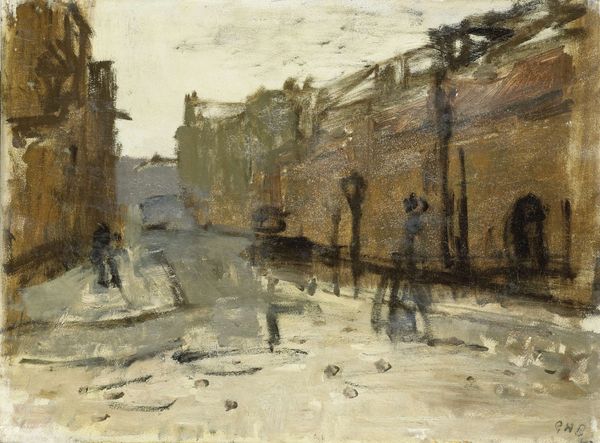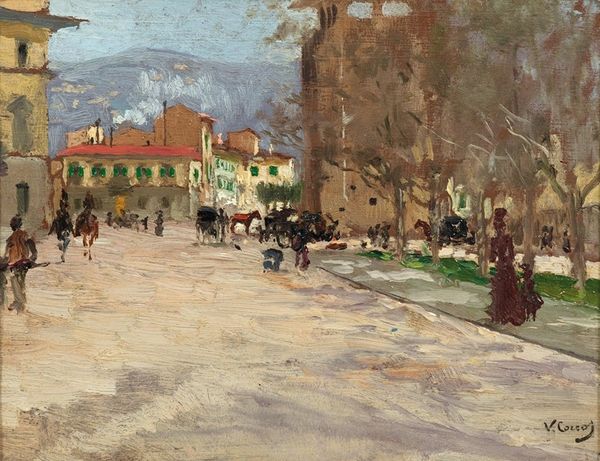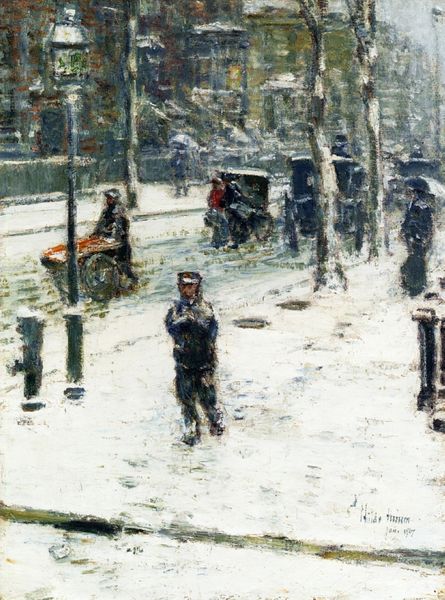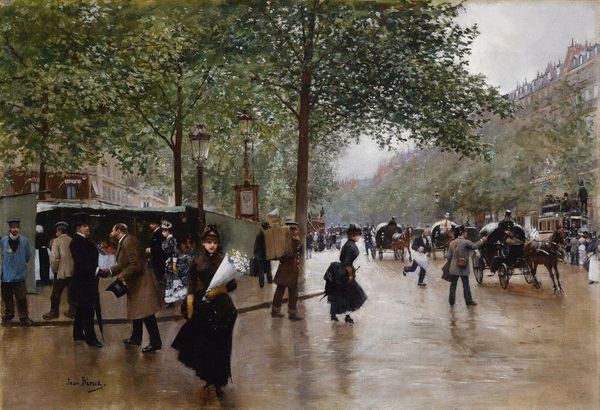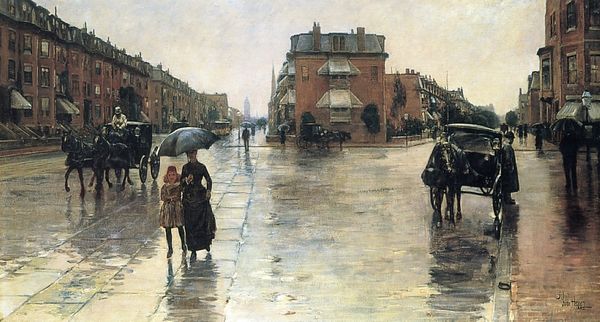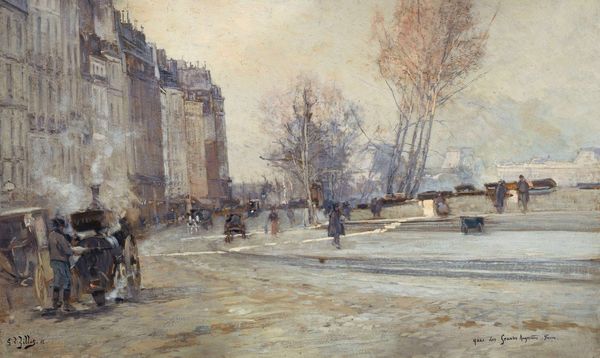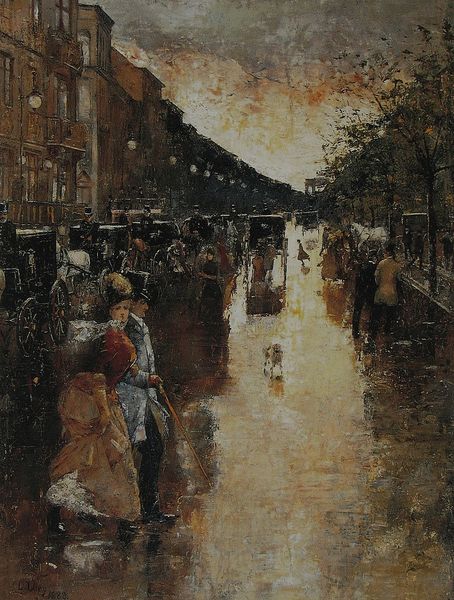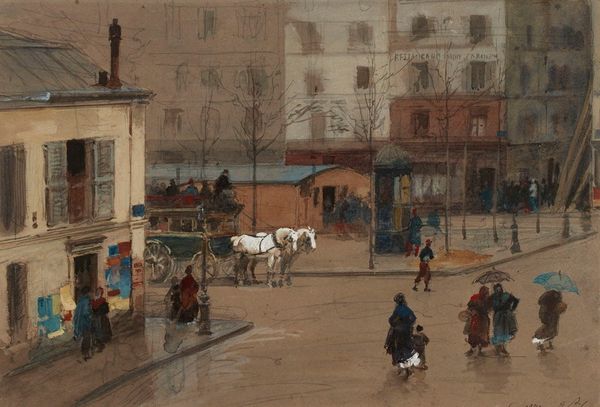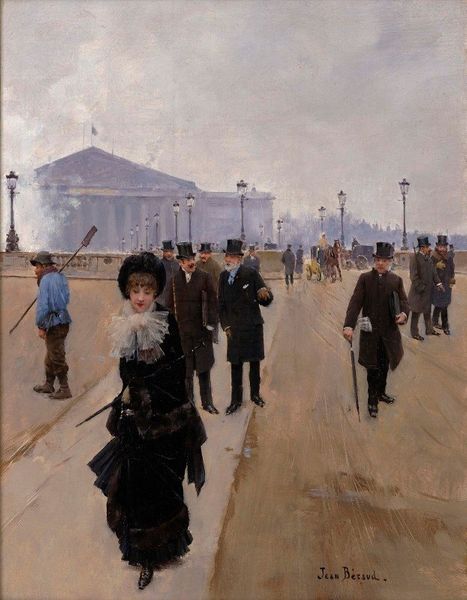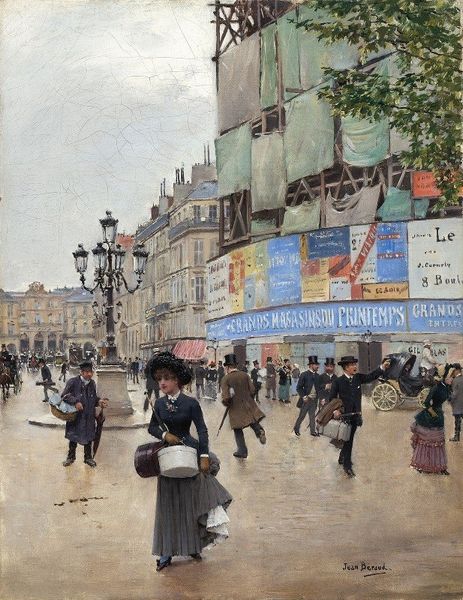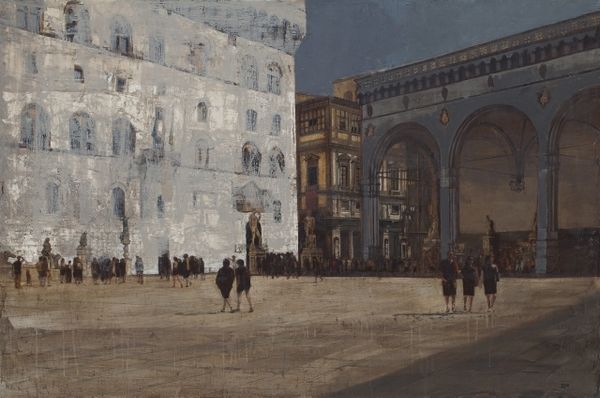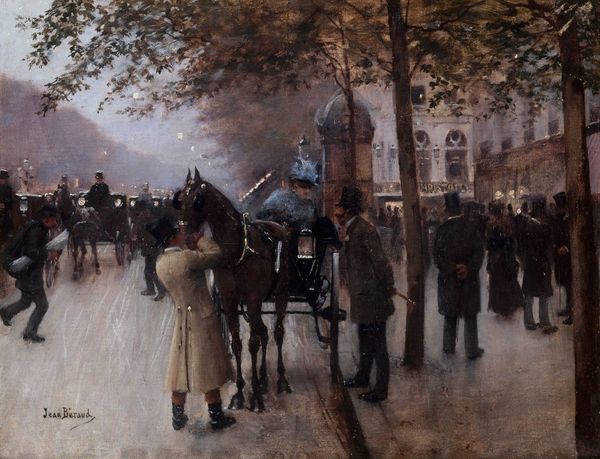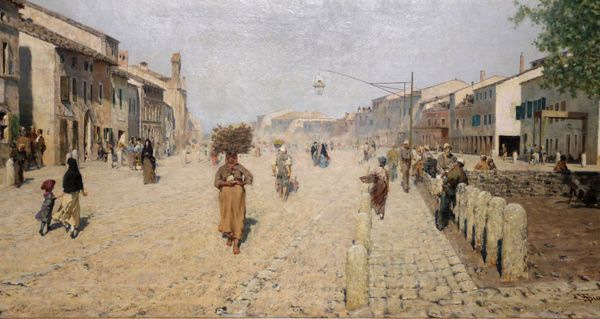
painting, plein-air, oil-paint
#
public art
#
flâneur
#
painting
#
impressionism
#
plein-air
#
oil-paint
#
landscape
#
oil painting
#
street photography
#
cityscape
#
genre-painting
#
modernism
#
realism
Copyright: Public Domain: Artvee
Editor: This is "Leaving Montmartre Cemetery" by Jean Béraud, painted in 1876. It's an oil painting, and it strikes me as a rather bleak, yet fascinating slice of Parisian life. What do you see in this piece? Curator: This painting really resonates with the emerging complexities of Parisian society in the late 19th century. Béraud captures not just a cityscape, but a society grappling with rapid industrialization and shifting class structures. Do you notice how the figures leaving the cemetery are primarily dressed in black? Editor: Yes, it gives them a certain uniformity. Curator: Precisely! And observe how they are divided, some more somber and dressed formally while others, seemingly workers, have different dress codes. This stark contrast isn’t merely about mourning; it reflects the societal hierarchies that even death cannot erase. This work can be seen as Béraud's subtle commentary on social inequalities within the context of a rapidly changing urban landscape. The smokestack in the background alludes to industry, furthering a commentary on industrialisation. Editor: So it's less about the individual experience of grief and more about the collective experience of life, stratified by class and circumstance? Curator: Exactly! The cemetery becomes a stage where social roles are momentarily suspended, but ultimately reasserted. Béraud challenges us to confront these structures and consider the experience of individuals situated differently in Paris. What do you think is the relevance for the viewer now? Editor: I had initially considered it just a scene, but your explanation makes me realize it can trigger much deeper reflections on our society. Thank you for helping me appreciate its significance. Curator: And thank you for making me consider the ways the themes can echo through time. It is easy to consider historical works as relics, but they have contemporary relevance if we make the connections.
Comments
No comments
Be the first to comment and join the conversation on the ultimate creative platform.
